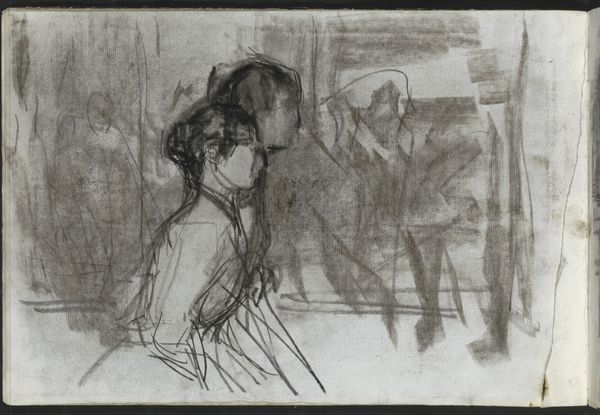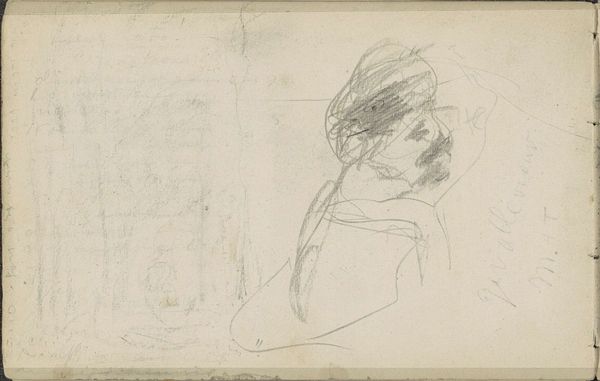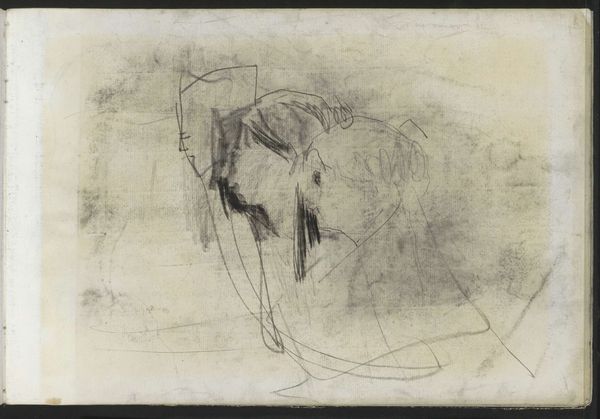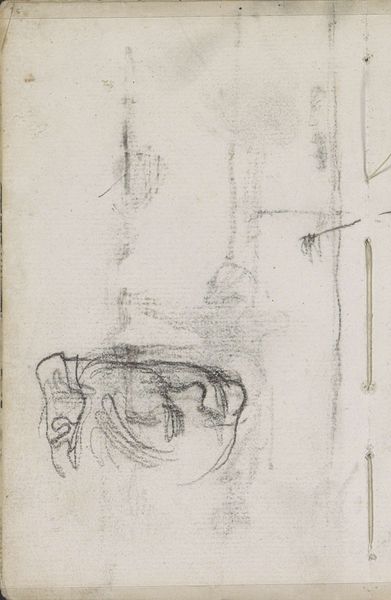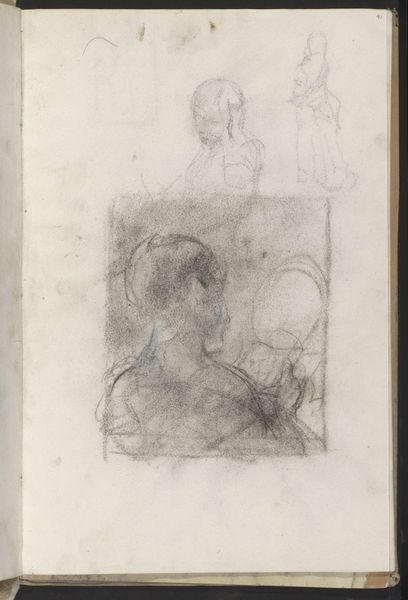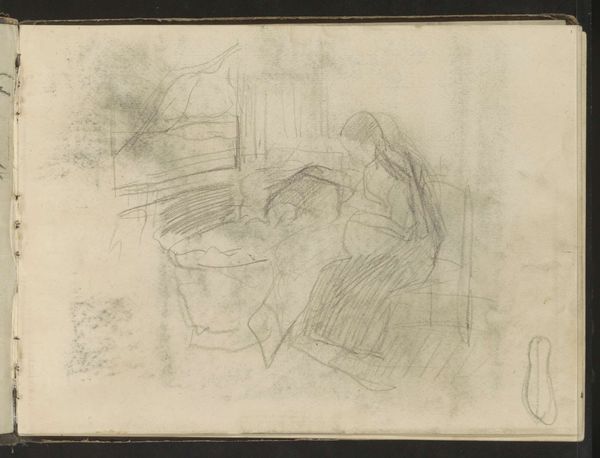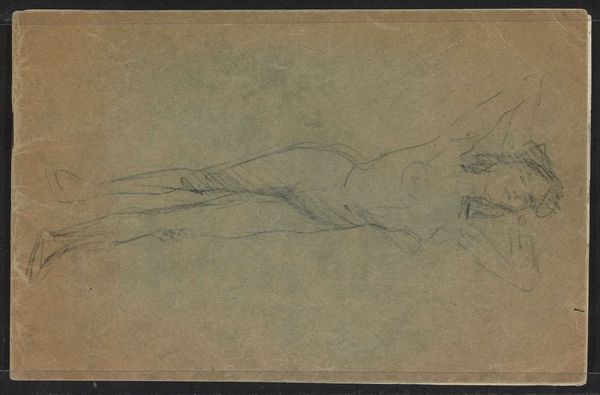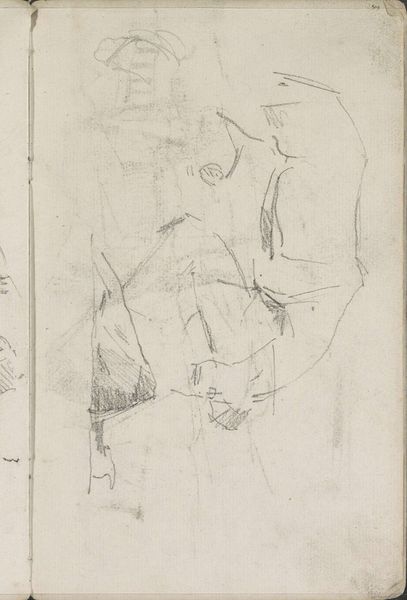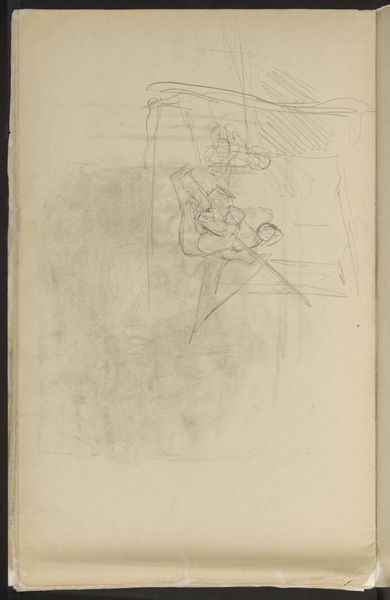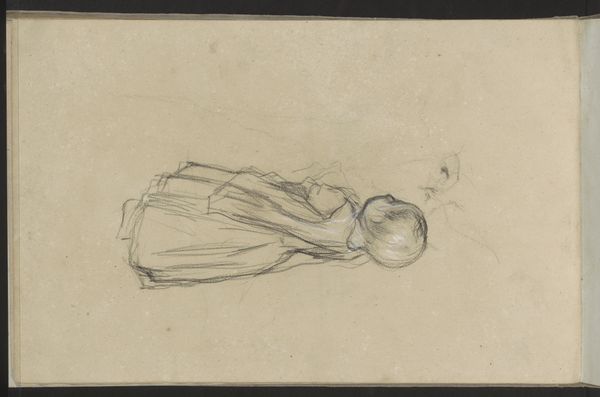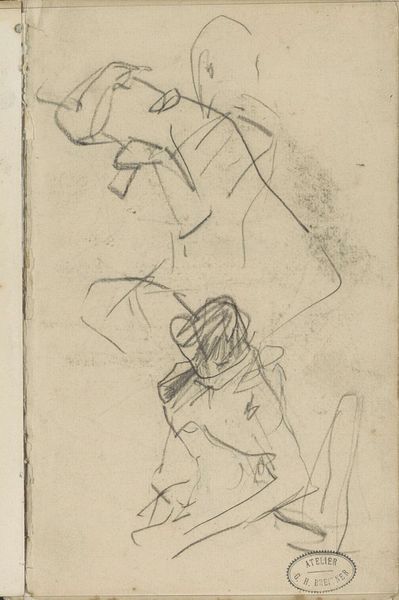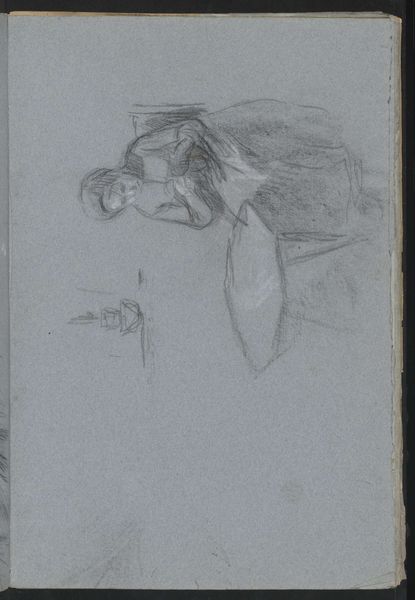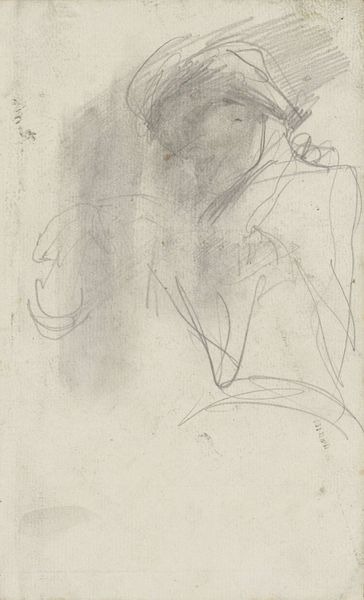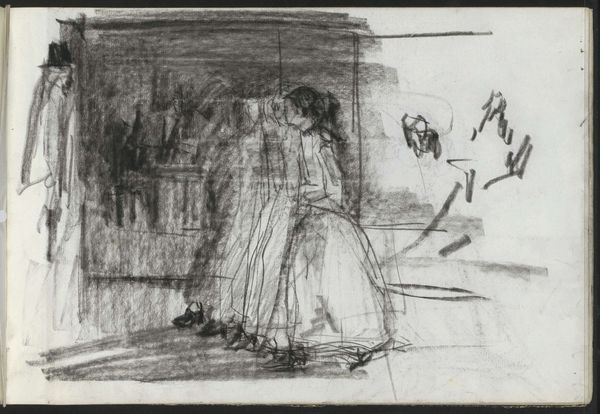
Copyright: Rijks Museum: Open Domain
Editor: So, here we have "Three Young Women, in Profile," a pencil drawing by Isaac Israels, dating from around 1886 to 1934. It has such a fleeting, ephemeral quality; I’m fascinated by the use of line to suggest form. How do you interpret this work through its formal elements? Curator: Indeed, the image's strength resides within its very construction. Consider the deliberate economy of line. Israels eschews precise contour, favouring instead a series of tentative, almost exploratory strokes. Note how these lines coalesce, suggesting the profiles, but never fully defining them. This creates a sense of movement, of the figures almost vibrating within the frame. Do you perceive how the negative space becomes as crucial as the drawn elements themselves? Editor: Yes, absolutely. The emptiness around the figures emphasizes their delicate presence. Also, I see the subtle variations in the pencil work, from lighter, feathery lines to darker, more emphatic marks. What does this variation suggest? Curator: Precisely. These tonal shifts contribute to the illusion of depth and volume. But more importantly, it highlights the artist's process, the act of seeing and recording. The drawing becomes a document of perception itself. This imbues the work with an authenticity and immediacy that transcends mere representation. Observe the composition and proportion also! Editor: That’s insightful! The sketch-like quality initially made me think of it as a study, but seeing it as a record of perception elevates it. I appreciate how focusing on these intrinsic formal aspects really opens up the reading of this seemingly simple sketch. Curator: Precisely. By attending to the work's inherent visual language, its line, tone, and composition, we gain a richer understanding. I’m delighted you appreciate that shift in perspective, and thank you.
Comments
No comments
Be the first to comment and join the conversation on the ultimate creative platform.
